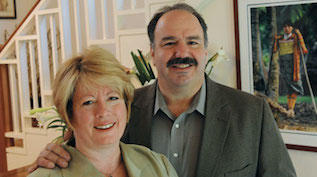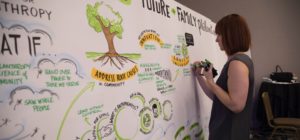A content collection is a specially selected group of resources about a particular, commonly searched topic designed to help you find quality resources easily. Browse our content collections by theme below.
Getting Started in Family Philanthropy
Collections include Getting Started, Policy Central, and more.
Exploring Donor and Family Legacy
 A donor legacy statement or video typically focuses on how the overall life experiences of the donors and their family inform and guide the grantmaking mission, strategies, and practices of the foundation. These statements may be written by the donors alone, by the donors with other family members, or, in cases where the donor is no longer alive, by family members or a long-time colleague.
A donor legacy statement or video typically focuses on how the overall life experiences of the donors and their family inform and guide the grantmaking mission, strategies, and practices of the foundation. These statements may be written by the donors alone, by the donors with other family members, or, in cases where the donor is no longer alive, by family members or a long-time colleague.
Getting Started: Choosing Your Giving Vehicle and Creating Your Mission
 As a philanthropic individual or family, it all starts with you. Depending on your vision and goals, you have many choices available to you for establishing a family philanthropy. If you plan on involving family, be sure to discuss your plans as a group so they are engaged from the outset. This Content Collection highlights key factors and questions you’ll need to consider as you chart your path forward, and provides guidance on which vehicle(s) will be best matched for your long-term goals.
As a philanthropic individual or family, it all starts with you. Depending on your vision and goals, you have many choices available to you for establishing a family philanthropy. If you plan on involving family, be sure to discuss your plans as a group so they are engaged from the outset. This Content Collection highlights key factors and questions you’ll need to consider as you chart your path forward, and provides guidance on which vehicle(s) will be best matched for your long-term goals.
Family Philanthropy and Donor-Advised Funds
Families face choices when it comes to how to do their philanthropy. They give in different ways using different vehicles. Over the past 20 years an increasing number of donors and families are choosing donor-advised funds (or DAFs, for short) as the primary vehicle for meeting their philanthropic goals.
Philanthropic Families Partnering with Community Foundations
Community foundations can be a trusted resource and partner to philanthropic families. They help families solve practical issues such as geographic dispersion and can provide deeper support around issues such as community problem-solving and family succession planning.
Policy Central
NCFP’s Policy Central includes sample policies and practices in the areas of governance, grantmaking, family dynamics, engaging the next generation, investments, management, and staffing. New samples are added frequently, and are here when you need them!
Leading Trends in Family Philanthropy
Collections include Racial Equity, Strategic Lifespan, and Impact Investing.
Racial Equity, Diversity, and Inclusion
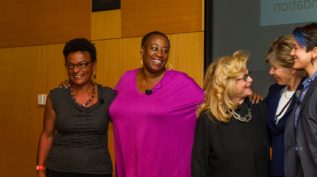
How do you define equity and how much emphasis do you place on advancing equity within your organization and through the grants that you make? How diverse is your board and staff, and how inclusive are you of other perspectives in your decision-making around grants, governance, and overall policy?
Imagining the Future of Family Philanthropy

As part of its 20th Anniversary, the National Center for Family Philanthropy held a year-long exploration of themes and trends in family philanthropy. This involved convening 17 focus groups around the country. These focus groups were comprised of a wide variety of family foundation representatives, including founding donors, next generations, trustees, and professional staff. This collection includes articles, blog posts, and video perspectives from leading thinkers in the field of family philanthropy, along with NCFP webinars and reports from the field discussing the future of philanthropy.
Spending Up: Considering Your Strategic Lifespan

What is the most compelling argument for continuing your family foundation, or donor-advised fund, in perpetuity? What is the most compelling argument for raising annual payouts and setting a closing date? Whether to operate indefinitely or limit the lifespan of a foundation is among the most fundamental questions that foundations can ask—and a conversation every family or board should have.
Impact Investing

A growing number of family foundations have made the strategic decision to align all or part of their investment portfolios with their philanthropic values and mission. This Content Collection, sponsored by Tiedemann Advisors, features stories and resources on impact investing and related strategies, including replays of past NCFP webinars on this topic, past NCFP blog posts, and additional resources, guides, and samples from those in our network.
Boards and Governance
Collections include Governance Essentials, Board Compensation, and Conflicts of Interest.
Board Compensation

Deciding whether to compensate or reimburse family foundation board members can be a difficult and complex decision. This Content Collection provides guidance on the legal regulations regarding compensation, suggestions for how to initiate a conversation among your board members about whether or not compensation is appropriate, and suggestions for how to develop a written policy based on this conversation.
Board Composition, Diversity, and Recruitment

With families growing ever more complex, varied, and far-flung, foundations and donor-advised funds need clear guidelines regarding who participates in their philanthropy and in what roles. Many families are also looking outside the donor family and considering community board members to complement the expertise and interests of family board members. This Content Collection provides resources, perspectives, and sample polices for families and boards thinking about board composition and recruitment, both within and outside the family.
Exploring Donor and Family Legacy
 A donor legacy statement or video typically focuses on how the overall life experiences of the donors and their family inform and guide the grantmaking mission, strategies, and practices of the foundation. These statements may be written by the donors alone, by the donors with other family members, or, in cases where the donor is no longer alive, by family members or a long-time colleague.
A donor legacy statement or video typically focuses on how the overall life experiences of the donors and their family inform and guide the grantmaking mission, strategies, and practices of the foundation. These statements may be written by the donors alone, by the donors with other family members, or, in cases where the donor is no longer alive, by family members or a long-time colleague.
Ethics and Accountability in Family Philanthropy

Your family’s philanthropic values – your sense of stewardship, your personal commitments and interests, and your desire to foster charitable impulses in your children and future generations – are the foundation of your family’s philanthropy. Articulating and discussing values on a regular basis is part of ethically responsible giving. And ensuring that your grants and gifts are effective in achieving your goals is also an ethical obligation. This Content Collection features board discussion papers, articles, sample policies and practices, and webinars on the topic of ethics and accountability in family philanthropy.
Family Foundation Board Chair Roles and Responsibilities
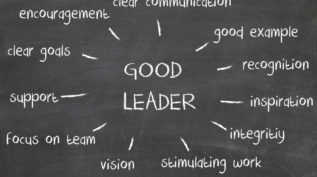
Successful family foundation board chairs are able to both drive action and manage egos — and are often the difference between a foundation deftly navigating challenging situations and being tripped up by them. It’s a role that needs careful consideration. Those serving in this capacity need the leadership skills needed to run smooth, productive board meetings. But it also requires more than just an ability to run a meeting. It requires a nuanced set of interpersonal skills that are not always easy to find.
Governance Essentials

What are the roles and tasks of family foundation board members? How do you make decisions about board structure and responsibilities? Trusteeship is—first and foremost—a very personal commitment to a public trust. This Content Collection provides both introductory resources as well as more detailed looks at many of the most important aspects of foundation governance. These resources will provide you with the opportunity to explore the roles and responsibilities of trusteeship: what does it mean to you and others, including your fellow trustees, and—unknown to you now—those who may one day take a role as a trustee of your foundation.
Self-Dealing and Conflicts of Interest
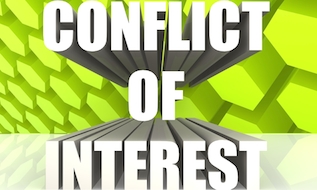
This Content Collection defines conflict of interest and self-dealing in family philanthropy, and highlights the most common problem areas, including: excessive compensation, tickets to fundraising events, and overlapping board members. Also included are recommendations for steps that foundations can take to avoid these pitfalls, including regular training, maintaining lists of disqualified persons, and adopting travel and conflict of interest policies.
Policy Central
NCFP’s Policy Central includes sample policies and practices in the areas of governance, grantmaking, family dynamics, engaging the next generation, investments, management, and staffing. New samples are added frequently, and are here when you need them!
Family Dynamics
Collections include Avoiding Avoidance, Family Power Dynamics, and Privacy and Transparency: Anonymous vs. Public Giving.
Avoiding Avoidance

Conflict is normal in any family or organization. Yet, many of us avoid conflicts, even if that avoidance affects relationships or how the foundation operates. In this Content Collection, you’ll learn about the most common conflicts in family philanthropy, the creative “tactics” some boards use to perpetuate the avoidance, and how you can use simple tools to address conflict in a healthy, productive way.
Family Meetings

How do you create a ‘safety zone’ at meetings for sensitive issues? How can executive directors help the board chair take responsibility for managing the board meeting? What is the role of the board versus the staff in facilitating the agenda? How do we create – and ensure that we follow – ground rules for stress-free family meetings?
Geographic Dispersion: Giving Together Across Distances

In our increasingly mobile society, family philanthropies once defined by their proximity now encounter a new obstacle: geography. How does geography affect a philanthropy’s mission? How do you keep the family and the philanthropy together? This Content Collection share webinars, stories, and tips for geographically dispersed family foundation boards and families.
Power Dynamics in Family Philanthropy

Power dynamics can really get in the way when you are trying to build a healthy, strong organization. If family foundations and their grantee partners don’t see eye to eye, or if junior members of the family pose challenges to their board leaders or elders, the back-and-forth struggle isn’t just uncomfortable; it can undermine the organizational stability and compromise impact. But there are practical, effective solutions for this struggle.
Privacy and Transparency: Anonymous vs. Public Giving

Modesty may make some families reticent, but others point to the potential for good in the family name and reputation. Many families have learned to take explicit advantage of what can be a useful grantmaking tool.The family name can garner respect, or at least attention. It can act as an imprimatur of sorts, particularly when the family encourages grantees to let others know they fund them. This timely and important NCFP Content Collection provides context for new donors considering how public to be with their grantmaking, management and operations, and provides ideas for existing foundations and boards contemplating this question.
Policy Central
NCFP’s Policy Central includes sample policies and practices in the areas of governance, grantmaking, family dynamics, engaging the next generation, investments, management, and staffing. New samples are added frequently, and are here when you need them!
Grantmaking Strategy and Evaluation
Collections include Grant Evaluation, Discretionary Grants, and Leveraging Small Grants for a Big Impact.
Advocacy and Lobbying: Learn Foundation Law and Other Resources

In 2010, legal staff at the David and Lucile Packard Foundation, Bill & Melinda Gates Foundation, The William and Flora Hewlett Foundation and Gordon and Betty Moore Foundation (collectively the “Foundations”) joined together to develop a comprehensive training program on legal issues in grantmaking. Learn Foundation Law is a free first-of-its-kind resource for private foundations (and others who are interested), to host e-trainings and tools related to the basic legal rules for private foundations.
Capacity Building: Why, When, and How

What is your role as a funder in building the organizational capacity of your grantees? And how can you best ensure that the support you offer is effective? This Featured Search provides tips, tools, perspectives and case studies from family foundations and other funders that have embraced capacity building as a key strategy.
Capital Grants

A capital campaign is an intensive fundraising effort organized to meet a specific financial goal within a specified period of time. Included within the classification of a capital campaign are such projects as the construction of a facility, purchase of equipment and endowment support. A capital grant should do more than just build or renovate a building. An ideal capital grant helps an organization that is already strong. Capital projects, when done right, can be transformational, changing the arc of the nonprofit organizations that they support. This Content Collection includes several articles and briefing papers from family foundations that have used capital grants as a core part of their strategy, along with sample guidelines for capital grants.
Collaboration and Partnership
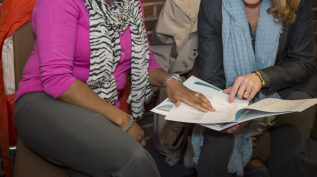
Whether working in a funder collaborative or finding ways to better partner with the grantees you support, collaboration and partnership is often at the heart of effective and impactful family philanthropy. This Content Collection includes a variety of stories of funders engaged in successful collaborations, as well as tips and tools for how to make the most of your relationships with fellow funders and grantees.
Discretionary Grants

If you asked at a gathering of family foundation folks whether using discretionary grants is a good idea, you’d never reach consensus. Many family foundations don’t use them. Those that do have widely varied policies governing how much money is available, who is eligible to make the grants, and whether the grants must be within the foundation’s mission and guidelines.
Funding Resiliency

Resiliency is the capacity of organizations to respond effectively to change, to adapt successfully to new and unforeseen conditions and circumstances – and to seize opportunity. It’s an essential characteristic of organizations that are built for ongoing success.
Grant Evaluation and Site Visits

Family foundations are in business to make a difference. This NCFP Content Collection focuses on techniques available for assessing and evaluating the results of your giving, as well as tips, strategies, and sample policies regarding grant evaluation and site visits.
Leveraging Small Grants for a Big Impact

As a grantmaker, no matter how small your assets are, you wield the power to make a change. How effective that change is depends on your strategy. This Content Collection offers resources and case studies on how to transform your small gift into big impact. We found inspiration for this collection in our sponsor and Leadership Circle member, The Leighty Foundation. Started in 1985 by Ike Leighty and his children, The Leighty Foundation has mastered the art of leverage.
Policy Central
NCFP’s Policy Central includes sample policies and practices in the areas of governance, grantmaking, family dynamics, engaging the next generation, investments, management, and staffing. New samples are added frequently, and are here when you need them!
Privacy and Transparency: Anonymous vs. Public Giving

Modesty may make some families reticent, but others point to the potential for good in the family name and reputation. Many families have learned to take explicit advantage of what can be a useful grantmaking tool.The family name can garner respect, or at least attention. It can act as an imprimatur of sorts, particularly when the family encourages grantees to let others know they fund them. This timely and important NCFP Content Collection provides context for new donors considering how public to be with their grantmaking, management and operations, and provides ideas for existing foundations and boards contemplating this question.
Taking Risks and Learning From Mistakes

Philanthropy is often described as society’s “risk capital.” This NCFP Content Collection provides context for how generous families can assess philanthropic risk, tame and mitigate risk, and even expand their comfort zone to embrace uncertainty and learn from their mistakes.
Management and Operations
Collections include Audits & Completing the 990-PF, Investment Policies, and Working with Consultants.
Advocacy and Lobbying: Learn Foundation Law and Other Resources

In 2010, legal staff at the David and Lucile Packard Foundation, Bill & Melinda Gates Foundation, The William and Flora Hewlett Foundation and Gordon and Betty Moore Foundation (collectively the “Foundations”) joined together to develop a comprehensive training program on legal issues in grantmaking. Learn Foundation Law is a free first-of-its-kind resource for private foundations (and others who are interested), to host e-trainings and tools related to the basic legal rules for private foundations.
Audits, Accounting, and Completing the 990-PF Form
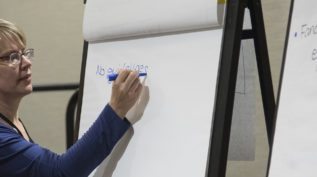
What questions should we ask our auditors? What are our fiduciary responsibilities as family foundation board members? What common mistakes do foundations make when completing the 990-PF? This Content Collection provides comprehensive but concise answers to these questions and many more.
Family Meetings

How do you create a ‘safety zone’ at meetings for sensitive issues? How can executive directors help the board chair take responsibility for managing the board meeting? What is the role of the board versus the staff in facilitating the agenda? How do we create – and ensure that we follow – ground rules for stress-free family meetings?
Foundation Archives

In this collection of reports and articles, professionals from across the field of philanthropy discuss the purpose of foundation archives, their various contents and uses, archival trends in the philanthropic sector, and approaches to the archival process.
Investment and Spending Policies

A successful family foundation investment strategy depends on both a sound process and well thought-out, written policies. This Content Collection includes resources describing how a foundation’s spending policy and organizational objectives are linked to development of a cohesive and integrated investment strategy, as well as sample policies and other related advice.
Policy Central
NCFP’s Policy Central includes sample policies and practices in the areas of governance, grantmaking, family dynamics, engaging the next generation, investments, management, and staffing. New samples are added frequently, and are here when you need them!
Privacy and Transparency: Anonymous vs. Public Giving

Modesty may make some families reticent, but others point to the potential for good in the family name and reputation. Many families have learned to take explicit advantage of what can be a useful grantmaking tool.The family name can garner respect, or at least attention. It can act as an imprimatur of sorts, particularly when the family encourages grantees to let others know they fund them. This timely and important NCFP Content Collection provides context for new donors considering how public to be with their grantmaking, management and operations, and provides ideas for existing foundations and boards contemplating this question.
Self-Dealing and Conflicts of Interest

This Content Collection defines conflict of interest and self-dealing in family philanthropy, and highlights the most common problem areas, including: excessive compensation, tickets to fundraising events, and overlapping board members. Also included are recommendations for steps that foundations can take to avoid these pitfalls, including regular training, maintaining lists of disqualified persons, and adopting travel and conflict of interest policies.
Working with Consultants

Does your foundation need skills or capacity that you might not have on staff or your board? Aligning the right consultant with an organization’s need, budget, and work style can generate significant benefits. But no single consultant can do everything, and client organizations often have a lot at stake when they engage an outside service provider. Learn from the S. D. Bechtel, Jr. Foundation’s guidance and lessons learned in this NCFP Content Collection.
Engaging the Next Generation
Collections include Discretionary Grants and Volunteering.
Discretionary Grants

If you asked at a gathering of family foundation folks whether using discretionary grants is a good idea, you’d never reach consensus. Many family foundations don’t use them. Those that do have widely varied policies governing how much money is available, who is eligible to make the grants, and whether the grants must be within the foundation’s mission and guidelines.
Volunteering and Family Philanthropy

In this unprecedented time of increasing needs and decreasing financial resources how can family funders support their closest grantees to more efficiently and effectively accomplish their critical missions? Volunteers are a vastly underutilized yet virtually unlimited resource that can expand and enhance nearly every area of an organization. However, to effectively tap volunteer resources requires creating a culture that values them and building an infrastructure to connect those who want to donate their time with high impact opportunities that empower them to make a real difference. This Content Collection offers tips for investing in your grantees’ capacity to engage volunteers, while also exploring the role of volunteering as part of the philanthropic education for your own family.
Transitions
This theme includes information about planning for transitions and viewing them as opportunities.
Transitions in Family Philanthropy

Many families put off preparing for a transition until it is upon them. Fear of the day a key family member and leader will no longer be able to participate is a common explanation for why families don’t address critical preparation for a leadership transition. This Content Collection encourages you to view upcoming transitions as an opportunity – to learn from where you’ve been, to envision a future built on that past, and to establish systems and practices that allow you to fulfill all the potential you can imagine. It’s the gift of family philanthropy – legacy and promise.
NCFP Special Collections
Collections include Webinar Replays Every Board Member Should Watch, the Best of Ginny’s Blog, and Faith and Family Philanthropy.
12 NCFP Webinar Replays Every Board Member Should Watch

Now entering its 15th year, NCFP’s monthly Family Philanthropy Webinar series has become one of the field’s most popular resources for hearing the voices and perspectives of donors, board members, and leaders in the field of family philanthropy. Collected here are a dozen of NCFP’s most popular and timeless webinars for family foundation board members, including our two-part “Toeing the Line” series, which explores common legal pitfalls in family foundation governance and grantmaking.
Generations of Giving
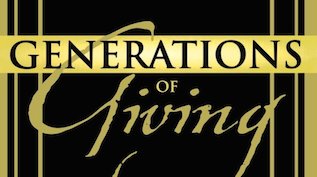 Using detailed and comprehensive analysis, Generations of Giving: Leadership and Continuity in Family Foundations examines continuity and leadership over time within family foundations. Although the foundations in the study are quite diverse in their goals and management, they have all had to confront and survive a common set of challenges. At the core of this volume is the study of two aspects of philanthropy: funding and volunteers—each essential to the survival of a foundation. This study is about the “why” and the “how” of these two crucial aspects.
Using detailed and comprehensive analysis, Generations of Giving: Leadership and Continuity in Family Foundations examines continuity and leadership over time within family foundations. Although the foundations in the study are quite diverse in their goals and management, they have all had to confront and survive a common set of challenges. At the core of this volume is the study of two aspects of philanthropy: funding and volunteers—each essential to the survival of a foundation. This study is about the “why” and the “how” of these two crucial aspects.
Best of “Ginny’s Blog”

Over the years, NCFP President Virginia Esposito has written on any and all topics related to family philanthropy, providing a vast array of wisdom and context for donors just getting started, for families moving to the critical “cousins generation,” and for those families looking to embrace the fifth (or later!) generation. Here we share a “best of” collection of Ginny’s writing on governance, family dynamics, embracing the next generation, the role of the donor, and more.
Community Foundations Family Philanthropy Network
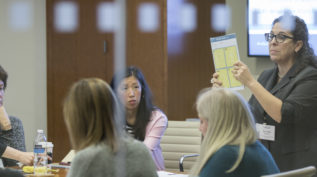
NCFP’s Community Foundations Family Philanthropy Network supports the special roles community foundations play with philanthropic families as a trusted resource and partner. Included here is a complete collection of Spark Session webinar replays, issue briefs, and other resources that have been created as part of this network.
Conscience & Community: The Legacy of Paul Ylvisaker

Paul Ylvisaker has been described as the heart and soul of organized philanthropy. He made a profound contribution to the American people through his service in philanthropy and public service. “Conscience & Community” is a collection of his essays, speeches, and articles on philanthropy, education, urban issues, and community, covering the early 1960s to shortly before his death in March 1992.
Faith and Family Philanthropy
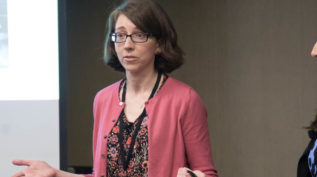
A family’s journey toward faith-directed philanthropy can begin with a single step—a look at your own values, motives, and traditions. This special Content Collection shares chapters from NCFP’s timeless Faith and Family Philanthropy Journal, including stories of families who have derived a core part of their purpose and passion from their faith.
We’re here to equip you with the tools you need to make a meaningful impact. Contact NCFP for support.
Keep up with trends in family philanthropy. Subscribe to our newsletter.
Gain access to personalized support and a network of peers. Join our community!


